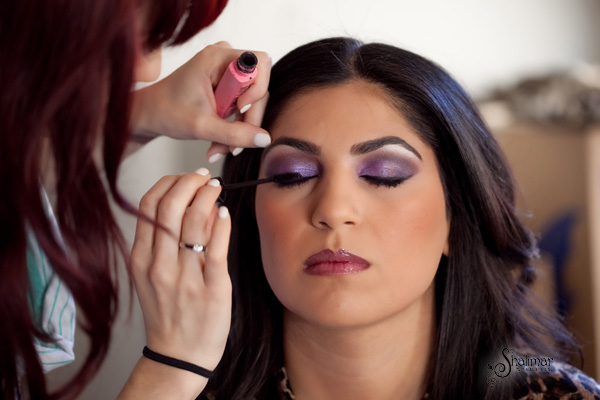Aperture & Shutter Speed: The World's Greatest Photoshop Effects (without using Photoshop)
It’s time to take your camera off of the automatic setting and even the shutter priority / aperture priority setting and start taking your creative potential to the next level. Yes, that means you have to use that scary “M” setting on your camera, meaning you manually control it based on what you want your images to look like. Aperture and shutter speed are God’s gift to realism. They allow you to present your unique perspective on the world with the utmost creative control. Knowing how to effectively use both will allow you to accomplish effects in the camera that 99 percent of the world saves until post production. Cloning people out, blurring the background a little more to eliminate the twigs, brush, a stop sign, etc. and even achieving exaggerated color palettes are all possible if you know how to use aperture and shutter speed to your advantage. The digital camera is one of the greatest learning tools ever invented in that it allows you to instantly see the effects of your creative choices when shooting. You instantly get to see what happens with even the slightest tweaks to your camera settings. Putting your camera on manual mode, and noting what happens when you change your camera settings is the first step in becoming a picture maker, rather than a picture taker.
Aperture | Basically, this allows you to control the amount of the scene that will be in focus (it does other things as well, but for now, we will stick with the basics). It allows you to eliminate unnecessary background elements by blurring them out. Large apertures (smaller F numbers) mean a more shallow depth of field (less in focus). Have you ever seen a shot of a flower where only the grains of pollen are in focus and the rest is a beautiful blurred color palette? That is aperture working its magic. It would not have the same effect if all the imperfect green leaves and scraggly details in the background were in focus. Large apertures f2.8, f3.5, f4, f5.6 give you a shallow depth of field that will turn unnecessary background and foreground elements into a nice dreamy color palette accentuating your subject matter. Small apertures like f16, f22, and f32 will give you a greater depth of field and more will be in focus. Broad landscape scenes are usually shot with apertures f16 and smaller (larger numbers mean smaller apertures). Just think, a little f-number f2.8, f4, f5.6, etc. (larger apertures…I know it’s confusing)=little focus. Larger f-numbers like f16, f22, etc. (smaller apertures) mean larger depth of field and more in focus. Practice shooting scenes with a variety of aperture settings and note the subtle differences between each one. An aperture of f5.6 might have rendered too much detail in the background elements causing you to want to open up the aperture to an f4 or f3.5 to blur out a smidgen more. You will soon learn exactly which setting you want to achieve your desired result.
Shutter Speed | This is your greatest paintbrush-like tool in that it allows you to paint movement, freeze fast moving objects, erase moving objects, capture streaks of light, and even exaggerate the color palette of a scene without cranking up the saturation in Photoshop. Longer shutter speeds like 1/15th of a second or more can give your composition a very dramatic and dreamy feel. Silky ocean tides and waterfalls, streaks of light through a cityscape, and even those Van Gogh “Starry Night” star trails are all the results of using long shutter speeds in which the movement of the subject is captured. I’ve also used longer shutter speeds to erase people in front of a busy cityscape. As long as the people aren’t wearing the old school British Knight light up shoes, they will disappear in the composition when using longer shutter speeds. Longer shutter speeds can also greatly exaggerate the color palette of any given scene due to the extended time that your CCD or film is exposed. It’s almost as if your film or CCD is a sponge that becomes more saturated the longer it is in contact with the light. Faster shutter speeds like 1/125 of a second or shorter can freeze moments in time. Water droplets coming out of a sprinkler, Kevin Durant dunking on just about anyone who gets in his way, and a lion sprinting across the Serengeti can be frozen in time using faster shutter speeds.
As you become more familiar with aperture and shutter speed, you will be able to achieve whatever result you desire, thus turning you into a photo maker rather than a photo taker. I approach each scene with a desired effect and use the two features to bring my vision to fruition. Sometimes, I need a longer shutter speed and set my shutter speed to the desired setting and change my aperture accordingly. Some scenes I approach in a completely opposite fashion knowing that I want a certain amount of the scene in or out of focus; therefore, I set my aperture to the desired setting, and adjust the shutter speed accordingly. The point is to know your camera well enough that you are making all of the creative decisions and not your automatic camera setting. Mastering these two aspects of photography will drastically improve your body of work and by extension, increase your credibility and the demand for your work or services. Uprgrading your gear is always better when you have to do it because your clientele demands it.













































